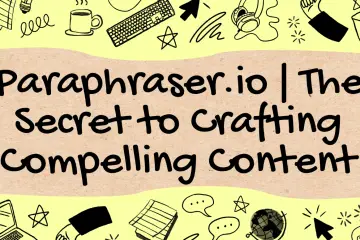What makes the perfect landing page? Marketers all over the world are asking this question. After all, they all pursue the common goal of working to increase the conversion rate as much as possible. However, this only works if the structure and content are equally convincing.
There are a number of approaches that have proven to be particularly beneficial for the conversion rate of landing pages. Below is everything you need to know to plan and optimize your landing page.
What is a landing page? – Definition
A landing page is a standalone individual page that has a specific goal and purpose. Structure and content are then optimized. The entire page leads in a targeted manner from an introduction to certain arguments to a conversion.
Landing pages are often used in marketing campaigns. Google ads or social media ads, together with this optimized page, form a marketing funnel that aims to achieve the best possible results with a view to a specific goal.
Why and when is a landing page useful?
A landing page is always useful if you want to achieve a clear, specific marketing goal. Most digital advertising campaigns benefit from a landing page, which then leads to action. Because in contrast to your normal website, this is not about complete and extensive information. These particular pages are clearly optimized to promote conversion.
So whenever you aim for a countable goal in the digital realm, you should think about this topic.
What is important in a landing page?
Each landing page has a clear goal to which all elements are subordinate. Because as soon as a person visits your landing page, you only have a few seconds to redeem what your advert, etc. promised. So you have to deliver.
The point is that many people just scan websites and don’t read them properly. It is, therefore, necessary that the page can be quickly surveyed and that the most important points are clearly highlighted. All information that is important for a decision must be presented clearly and convincingly.
At the same time, you also need clear indications of the target action. It must be clear what the problem is and how to solve it by taking the desired action. This is the only way the site will perform well.
Relevant preliminary considerations for your landing page
1. The target audience: Who is the site intended for?
Before creating the landing page, you must define your target group clearly and understand all their needs and questions. After all, you would describe and advertise a B2B service for IT specialists differently than an introductory course in online marketing or individually designed sneakers.
The general rule is: more is more. The more information you have about your target audience, the better you can respond to them. So gather all the information you can get. This is the only way your landing page will perform in the best possible way.
2. Define a clear goal!
What should the landing page achieve? You must have a definite answer to this question. The goal can vary: Register for a newsletter, download an e-book against contact details, contact request, order …
It is important that the goal of the five SMART rules follows: It must be specific, edible, accepted, realistic, and to be terminated. Because you can only see if your landing page is successful if you have a clear goal that can also be measured within a certain period of time.
3. Embedding in Marketing
The best site in the world won’t do you any good if nobody lands on it. So consider the question: How do prospects get to your landing page? This is another crucial issue. Usually, such pages are embedded in a campaign, e.g. via social media, newsletter, or search engine advertising. So consider beforehand which marketing measures will be used to distribute the site.
SEO also plays a role in this context. While most of a landing page’s traffic often comes from ads, etc., it still pays to keep the overall relevance of the page high. So research keywords and search intention beforehand and incorporate them sensibly on the page. Overall, this leads to better results with Google Ads because the texts match the ads better – and the landing page may also be found via organic search.
The ideal structure of your landing page
1. The successful start
The first impression counts. After all, your page needs to deliver what the ad promised. But they only have a few seconds to do so. Therefore, the entry must be designed in a target-oriented and meaningful way.
In order for you to be able to do this, you need to know which dvices your prospects use to access the page and then optimize it. A clear headline (H1) provides information about the core topic. In addition, you can use a subheadline (H2) to explain it in more detail.
The header area should also be visually appealing. Use e.g. a video or a meaningful image. In addition, you provide a short introductory text that reflects the core message of the landing page. Garnished with a call-to-action including a button with a jump label to the action, you can get started without any problems.
Your start should contain the following elements:
- Meaningful headline (possibly with subheadline)
- Persuasive visual (image or video)
- Short, concise introductory text
- Call-to-action including jump label to the action
- Optional: Additional information if space is available
All this should ideally be visible at first glance. Of course, this is easier with the desktop version than with a mobile version, where you have to be a little more creative in order to get as much as possible to the point in the most appealing way.
2. A convincing middle part
Was the introduction successful and enticed people to stay on the page? Then you must not slack off in the middle part of your landing page. To do this, you must continue to tell the story that you announced with the ad and entry.
Imagine the middle part as a sales pitch in which you structure all relevant arguments in a meaningful way deliver. Why is your product or service the perfect solution? Why do visitors absolutely need you?
It is important that all information is presented in an appealing way. Rely on versatile content elements (diversity of content), so use images, videos, or icons. In this way, you create variety for the eye and lead interested parties step by step through your argumentation.
Never lose yourself in optical gimmicks. Each element in the middle part is subordinate to the goal and should lead visitors from the entrance to the action. To do this, keep putting a call-to-action in the middle section.
So your center section will need:
- Clearly structured argumentation
- Appealing, goal-oriented design
- Call to action
3. Shortly before the end: build trust
Before you come to the final part and thus to the action, you should ideally present your argument finally substantiate. This works particularly well with elements that build trust. Seals, awards, and customer testimonials are suitable for this.
The latter is particularly helpful, especially if they are integrated with a picture and personal information. You can also integrate partners and companies with whom you cooperate at this point. Finally, set a clear call to action again.
Shortly before the final part, use:
- Trust items such as Seals, awards, and customer testimonials
- Logos of partners and other companies (possibly customers or cooperations)
- Call-to-action (can be omitted if the action takes place immediately below)
4. The final part: take the action
Did you make a convincing argument and the clientele was successful from the entry through the middle part and the trust elements used all the way to the end? Then it’s finally time for action!
The ending now gives the opportunity to perform the requested action. Of course, this differs depending on the objective.
However, it should always be simple and directly implementable. Nobody wants to be redirected to a shop after a landing page to place an order there. The action must be carried out directly on the landing page.
So the final part contains only one element:
Clearly feasible target action (contact form, download button, shopping option…)
Plan your optimal marketing campaign now
Of course, the perfect page is always an individual process. You need to find what works best for your target audience. However, if you orientate yourself on the points mentioned, you are guaranteed to be on the right track. We wish good luck to you – and above all many conversions!







